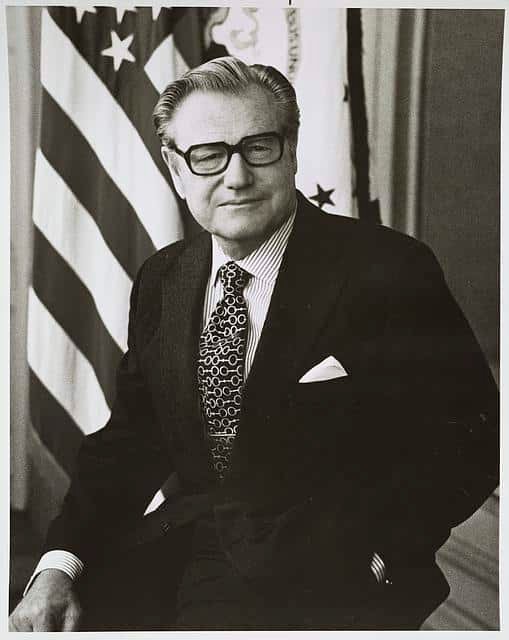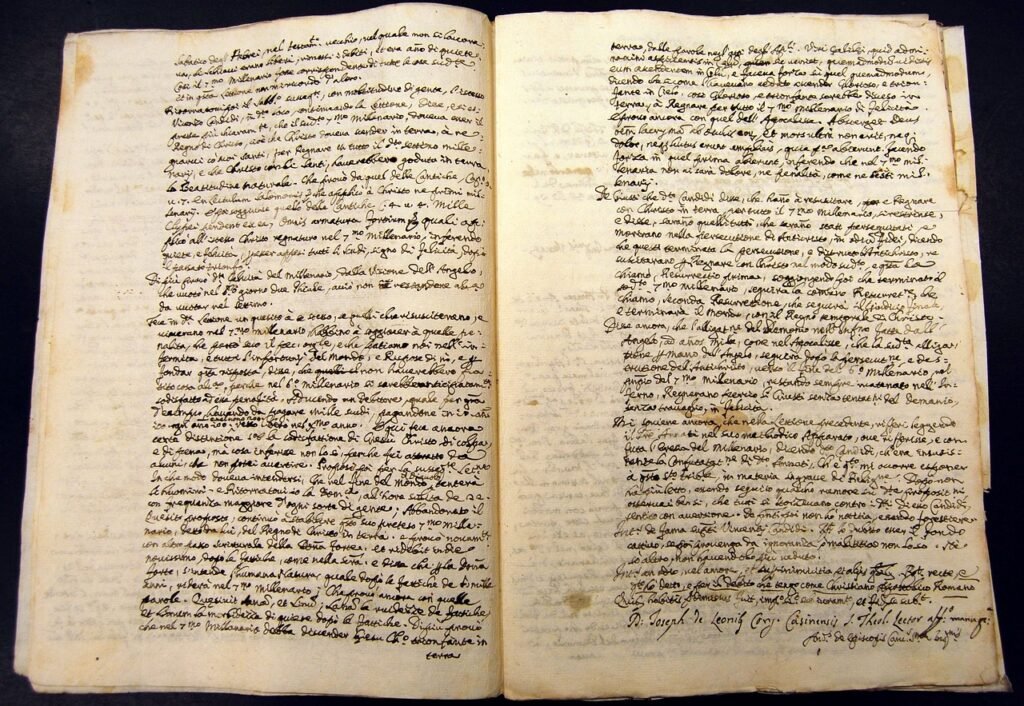




Nelson Rockefeller
Nelson Aldrich Rockefeller (1908–1979), the 41st Vice President of the United States, was a prominent political leader, philanthropist, and businessman who left an indelible mark on American politics and public life. Serving under President Gerald Ford from 1974 to 1977, Rockefeller’s career spanned decades of public service, including his tenure as Governor of New York, and was marked by his advocacy for progressive policies, economic development, and cultural enrichment.
Early Life and Education
Nelson Rockefeller was born on July 8, 1908, in Bar Harbor, Maine, into one of the wealthiest and most influential families in the United States. His father, John D. Rockefeller Jr., was the heir to the Standard Oil fortune, and his mother, Abby Aldrich Rockefeller, was a prominent art patron and social activist. Nelson was the third of six children and grew up in an environment that emphasized philanthropy, public service, and cultural patronage (Harr & Johnson, 1988).
Rockefeller attended the Lincoln School in New York City, an experimental progressive school that influenced his views on education and social reform. He later enrolled at Dartmouth College, where he majored in economics and graduated cum laude in 1930. During his time at Dartmouth, Rockefeller demonstrated a keen interest in public affairs and leadership, serving as president of the student council and participating in numerous extracurricular activities (Smith, 1988).
Early Career and Public Service
After graduating from Dartmouth, Rockefeller joined the family’s philanthropic enterprises, working with the Rockefeller Foundation and the Rockefeller Center in New York City. He played a key role in the development of Rockefeller Center, overseeing its construction and ensuring its success as a cultural and commercial hub. His early experiences in managing large-scale projects and navigating complex organizational structures prepared him for his later political career (Harr & Johnson, 1988).
During the 1930s, Rockefeller developed a strong interest in Latin America, influenced by his travels and interactions with regional leaders. In 1940, President Franklin D. Roosevelt appointed him Coordinator of Inter-American Affairs, a position created to promote cultural and economic cooperation between the United States and Latin American nations. Rockefeller’s efforts included promoting U.S. investment in the region, countering Axis influence during World War II, and fostering goodwill through cultural exchanges (Smith, 1988).
In 1944, Rockefeller became Assistant Secretary of State for American Republic Affairs, where he continued to focus on Latin American policy. His tenure was marked by his commitment to economic development and his belief in the importance of strengthening U.S.-Latin American relations. Rockefeller’s work during this period cemented his reputation as a skilled diplomat and administrator (Greenberg, 1996).
Governor of New York
Rockefeller entered electoral politics in 1958, running as a Republican for Governor of New York. He defeated the incumbent, W. Averell Harriman, in a closely contested race. Rockefeller served as governor from 1959 to 1973, becoming one of the most influential and longest-serving governors in New York history. His administration was characterized by ambitious programs in education, health care, transportation, and urban development (Bellush, 1975).
As governor, Rockefeller championed progressive policies that reflected his belief in the power of government to improve citizens’ lives. He oversaw the expansion of New York’s public university system, creating the State University of New York (SUNY) network, which became one of the largest higher education systems in the world. Rockefeller also increased funding for public schools, hospitals, and mental health facilities, demonstrating his commitment to social welfare (Greenberg, 1996).
Rockefeller’s tenure as governor was not without controversy. His aggressive approach to urban renewal and infrastructure development, including the construction of highways and public housing projects, drew criticism for displacing communities and prioritizing development over local concerns. Additionally, his support for strict drug laws, known as the “Rockefeller Drug Laws,” which mandated harsh penalties for drug offenses, remains a contentious aspect of his legacy (Bellush, 1975).
Presidential Ambitions
Rockefeller’s success as governor and his national prominence made him a leading contender for the Republican presidential nomination in the 1960s. He sought the presidency three times, in 1960, 1964, and 1968, but faced challenges from the conservative wing of the Republican Party. His progressive views on social issues, support for civil rights, and advocacy for government intervention in the economy alienated many conservative voters, particularly in the South and Midwest (Smith, 1988).
In 1964, Rockefeller’s candidacy was overshadowed by his divorce and remarriage to Margaretta “Happy” Murphy, which drew criticism from social conservatives. At the Republican National Convention, Rockefeller’s speech was met with boos from conservative delegates, signaling the growing divide within the party. Ultimately, he lost the nomination to Senator Barry Goldwater, whose conservative platform represented a stark contrast to Rockefeller’s moderate and progressive vision (Greenberg, 1996).
Vice Presidency
In 1974, following the resignation of Vice President Spiro Agnew and the ascension of Gerald Ford to the presidency after Richard Nixon’s resignation, Ford nominated Rockefeller as his Vice President. Rockefeller’s nomination was seen as a move to stabilize the administration and bring experience and credibility to the executive branch. Despite opposition from conservative Republicans, he was confirmed by Congress and took office on December 19, 1974 (Harr & Johnson, 1988).
As Vice President, Rockefeller played an active role in domestic and foreign policy. He chaired several commissions, including the Rockefeller Commission, which investigated alleged abuses by the Central Intelligence Agency. He also worked to promote urban development and economic revitalization, drawing on his experience as governor. However, Rockefeller’s tenure as Vice President was constrained by the political dynamics of the Ford administration and the growing influence of conservative Republicans (Bellush, 1975).
In 1976, Rockefeller announced that he would not seek reelection as Vice President, citing personal reasons and the shifting political landscape. His decision marked the end of his formal political career, though he continued to influence public policy and philanthropy in his later years (Greenberg, 1996).
Personal Life and Character
Nelson Rockefeller married Mary Todhunter Clark in 1930, and the couple had five children before divorcing in 1962. He later married Margaretta “Happy” Murphy, with whom he had two more children. Rockefeller was known for his charisma, energy, and relentless drive, traits that made him a formidable leader and an enduring public figure (Smith, 1988).
Rockefeller’s personal wealth and family connections were both an asset and a source of criticism throughout his career. While his financial resources allowed him to pursue ambitious projects and campaigns, they also led to accusations of elitism and detachment from the concerns of ordinary Americans. Despite these criticisms, Rockefeller’s commitment to public service and his belief in the transformative power of government remained central to his identity (Harr & Johnson, 1988).
Death and Legacy
Nelson Rockefeller died on January 26, 1979, at the age of 70, from a heart attack. His death marked the end of an era in American politics, as he was one of the last prominent representatives of the moderate wing of the Republican Party. Rockefeller’s contributions to public life, including his leadership as Governor of New York and his service as Vice President, left a lasting impact on American politics and governance (Greenberg, 1996).
Rockefeller’s legacy is complex and multifaceted. His progressive policies, commitment to cultural enrichment, and belief in the power of government to address societal challenges reflect a vision of leadership that continues to inspire debate and analysis. While his presidential ambitions were never realized, his influence on public policy and his dedication to public service remain enduring aspects of his life and career (Smith, 1988).
Final Summary
Nelson A. Rockefeller’s life and career exemplify a commitment to public service, innovation, and progressive leadership. From his early work in philanthropy and diplomacy to his tenure as Governor of New York and Vice President of the United States, Rockefeller consistently sought to address the challenges of his time through ambitious policies and programs.
References
Bellush, J. (1975). Nelson Rockefeller: A Political Biography. New York: Praeger.
Greenberg, D. (1996). The Rockefeller Legacy: Power and Philanthropy in the Twentieth Century. New York: Basic Books.
Harr, J. M., & Johnson, P. (1988). The Rockefeller Century: Three Generations of America’s Greatest Family. New York: Scribner.
Smith, R. N. (1988). On His Own Terms: A Life of Nelson Rockefeller. New York: Random House.
Williams, T. H. (1975). The Modern Republican Party: Nelson Rockefeller’s Influence. Boston: Beacon Press.